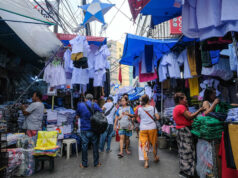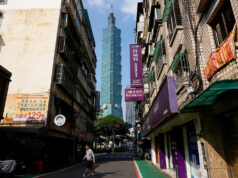THE government’s economic team will meet Japanese officials this week in Hakone, southwest of Tokyo, to discuss the progress of big-ticket infrastructure projects supported by Japan.
Finance Secretary Carlos G. Dominguez III and Socioeconomic Planning Secretary Ernesto M. Pernia will represent the Philippines Friday during the ninth high-level meeting of the Philippines-Japan Joint Committee on Infrastructure Development and Economic Cooperation.
Meanwhile, the Japanese delegation will be led by Hiroto Izumi, special advisor to the Prime Minister.
Mr. Dominguez said in a statement Wednesday that the two countries regularly meet to ensure a “fast and sure” approach in implementing the Japan-funded projects under the “Build, Build, Build” program.
The two sides met in Clark earlier this year while the very first meeting was held in March 2017 in Tokyo.
In an interview on Wednesday, Mr. Pernia said that the meeting will assess ongoing projects “to see how they are moving, if there is any need for midway adjustments and also to look at the projects in the pipeline that will be ready for implementation.”
Mr. Pernia said that the two countries will ensure that ongoing projects are delivered sooner than later. The pace of implementation will also be discussed to see if there is a need for an “additional push.”
Asked if new agreements will be signed, he told BusinessWorld: “so far, there’s nothing that has been scheduled but it’s possible that need for new loans may just crop up and the Japanese side may just be willing to accommodate.”
Since President Rodrigo R. Duterte assumed office in June 2016, the two sides have signed 10 loan agreements in total, Mr. Dominguez said. He added that these loans were processed and approved in a span of three to four months.
As of December, Japan was the top source of official development assistance (ODA) loans and grants.
Japan accounts for 46% of the country’s total ODA loan portfolio.
Japan was also the country’s second-largest trading partner in 2018 with two-way trade of $21.1 billion. It was the second-largest export market with shipments worth $10.3 billion, and the third-largest source of imports worth $10.82 billion.
Japan was the fourth-largest source of visitors with 631,000 in 2018, up 8.15% from a year earlier.
The country’s 10 loan agreements with Japan fund the second phase of the Maritime Safety Capability Improvement Project for the Philippine Coast Guard; the “Harnessing Agribusiness Opportunities through Robust and Vibrant Entrepreneurship Supportive of Peaceful Transformation” project; the Cavite Industrial Area Flood Risk Management project; the third phase of the Arterial Road Bypass project in Bulacan; the New Bohol Airport Construction and Sustainable Environment Protection project (II); the Metro Rail Transit Line 3 Rehabilitation project and the fourth phase of the Pasig-Marikina River Channel Improvement project.
The three other agreements were the first tranche of the North-South Commuter Railway Extension project loan, the Road Network Development project in conflict-affected areas in Mindanao, as well as the first phase of the Metro Manila Subway project, which is the single biggest venture under the “Build, Build, Build” program according to the statement issued by the Department of Finance. — Beatrice M. Laforga



